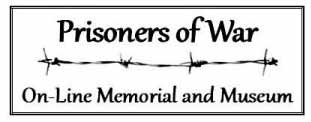
Arthur Burkett – The Long March story (unfinished)
Firsthand Long March Accounts, Long Marches, Treatment and WelfareArthur Burkett - The Long March
Epilogue by Linda Burkett.
This is from the larger note book, as Arthur was writing his story from the smaller diaries, but sadly he never finished.
Arthur died in 1971, aged 53years old.
This is his…

Arthur Burkett – Long March Diary (transcribed by Linda Burkett)
Firsthand Long March Accounts, Long Marches, Treatment and WelfareArthur Burkett – Long March Diary. 5th March – 28 April 1945
Copyright Linda Burkett
Author’s notes.
I never met Arthur as I met his son just after his death in 1971.
It’s ironic the many references of trying to get cigarettes,…

Arthur Lovell – Long March Diary and transcript
Firsthand Long March Accounts, Long Marches, Post-war experiences, Treatment and WelfareArthur Lovell was captured on 20th May 1940 on the outskirts of Amiens in north east France. As far as we know he only kept a diary for the year 1945 and we wonder 'where did he get it from?'
The first entry is for 21st January 1945 and starts…

Thomas Alan Dirkin – Long March account
Firsthand Long March Accounts, Long MarchesThomas Dirkin's account of his Long March was written in a letter to Elfriede Hannak, who was a typist working at Stalag VIIIB office, and who seems to have befriended a number of POWs.
Read Thomas Alan Dirkin's Long March Account

Lamsdorf Long March map released
Long MarchesAn interactive map project focusing on 47 men's march routes from Stalag VIIIB has been published at https://lamsdorflongmarch.com/.
Work on the maps and website was led by Dave Lovell and Ian Bowley, sons of two prisoners of war at Stalag…

Alfred Thomas – Long March Diary and Transcript
Firsthand Long March Accounts, Long MarchesTranscription of Long March Diary
Date
Description
23/1/1945
Left Lamsdorf
24/1/1945
Blank
25/1/1945
Cabbage Soup at Munsterburg
26/1/1945
Frankenstein
27/1/1945
Riechenback
28/1/1945
Barley soup Schweidnity…

Combined Long March Diaries of Clare, Tattersall, McLardy & Gibbens
Firsthand Long March Accounts, Long MarchesDiary entries from 22nd January 1945 to 6th February 1945
Primary sources:
Captain Wesley Clare, Royal Hamilton Light Infantry
Captain Peter Tattersall, R.A.M.C.
Major Turner McLardy, R.A.M.C.
Secondary source:
Captain…

The Lamsdorf Long March
Long MarchesIn January 1945, as the Soviet armies resumed their offensive and advanced into Germany, many of the prisoners were marched westward in groups of 200 to 300 in the so-called Long March. Many of them died from the bitter cold and exhaustion.…
